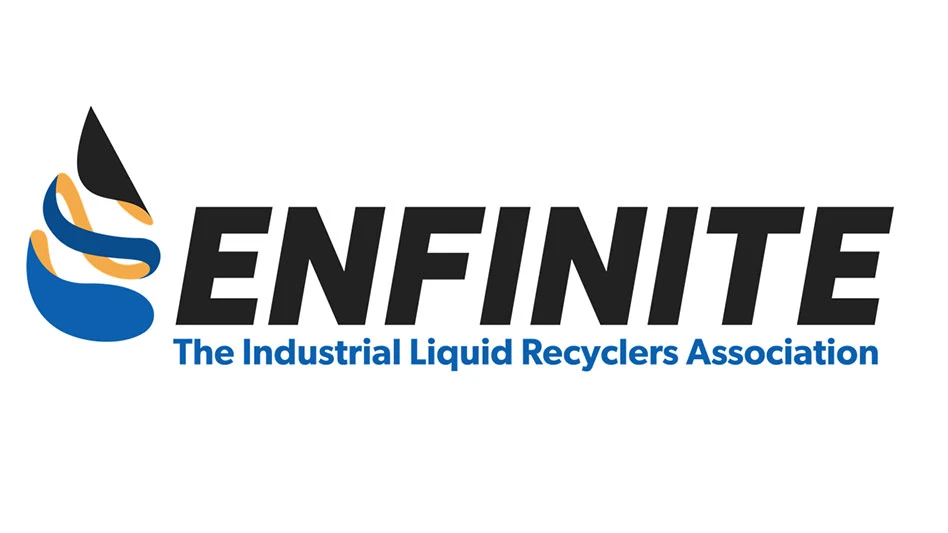Supporting today’s balers requires a great deal of attention to detail. It involves a commitment to maintenance, aftermarket support from the dealer or manufacturer, and a well planned infeed system to keep the baler humming. "It’s important that the company buying the baler truly adopts it," says Rick Goebbel, sales application engineer for American Baler Co., Bellevue, Ohio. "Many people do not have this mindset, and they will run the equipment until a breakdown occurs. That can be avoided with proper maintenance."
MAINTAIN THE STRAIN
Company executives and owners have a lot on their minds when running their operations from day to day, from tracking commodity markets to complying with environmental regulations. Unfortunately, preventative maintenance often is not an item high on the priority list, according to several baler manufacturers. Some recycling companies even admit this can be the case.
But delaying or not being consistent about preventative maintenance is unwise. When this happens, preventative maintenance is replaced by corrective maintenance.
"Maintenance is not always on the top of an owner’s or operator’s mind, and it should be," says Gary Westenberg, service engineer for the East Coast region for Van Dyk Baler, Stamford, Conn. "Recyclers are mainly concerned about running capacity and moving material. That’s understandable, but if the baler goes down, capacity goes out the window. Maintenance has to be a daily thing."
All balers come with a service manual which details daily, weekly and other periodic maintenance that should be performed on the equipment. And this is maintenance that is within the capability of the company’s personnel. Most baler companies will spend a few days reviewing maintenance procedures with the operators or company maintenance personnel to ensure that they are properly trained.
Even so, maintenance often just seems to slip away. "It really starts at the beginning," says Goebbel. "The company sees the brand new piece of machinery, and they feel that it doesn’t need any maintenance. Well, days turn into weeks, months and years, and before you know it, there’s a catastrophic breakdown in the baler, and the company is clueless as to why it happened."
Routine maintenance is the most important thing a processor can do for the baler, agrees John Sacco, president of Sierra International Machinery, Bakersfield, Calif. "There are those people that do not do their share of maintenance, and we know who those companies are because they are always calling us with a problem. Most of the maintenance revolves around simple greasing and lubing and changing filters on a regular basis. Also, the operator needs to be cleaning up around the machine on a daily basis."
Another area is accountability. Specifically, company owners should ask whether maintenance checks are being done, and if so, whether they are being done properly. There should be some type of quality control measure in the maintenance department.
Two companies that were singled out by manufacturers as having a solid baler maintenance program were Scrap-All Inc., Tampa, Fla., and CRInc./Waste Management Inc. of West Illinois – a material recovery facility located in Carrol Stream, Ill.
Scrap-All, which has three ferrous balers and 14 vertical balers, has a dedicated maintenance department, according to Mark Goldman, vice president of the company. "If you have several pieces of major equipment, you must have a dedicated maintenance department to stay on top," he says. "Most scrap yards have a ‘Mr. Fixit’ guy that does everything. We, on the other hand, have a crew and facility that has properly stocked parts and all the manuals. The maintenance department has an accountability log for each piece of equipment."
Scrap-All personnel do visual inspections each day on the balers to see if there are wear spots, cracks in welds, or other easily identified problems. "If the ram is out of alignment, for example, then there could be problems," says Goldman. "It might not affect the operation of the baler right away, but if it is caught early it will save us money down the road."
For CRInc./Waste Management Inc., daily cleaning of and around balers is one of the most important maintenance tasks that can be performed. "We have five balers, and each one is dedicated to a commodity: one for aluminum cans, one for steel cans, another for PET bottles, one for HDPE bottles, and a fifth baler – a larger machine – dedicated to paper," says Jeff Heuer, maintenance and operations manager for the facility.
"If you do the housecleaning on a daily basis, you reduce downtime, because with balers there are problems that can build up if there isn’t regular maintenance – and if you don’t perform daily cleaning you won’t be able to find these problems, such as small leaks in the hydraulic oil system that could eventually lead to a major leak," continues Heuer. "Downtime is a killer in this industry."
Because of its maintenance program, CRInc./WMI had a downtime rate of only 1 percent to 2 percent last year, according to Heuer. "We run about 240 to 260 tons of material through here every day, so we are happy with those figures."
In addition to daily cleaning and the regular periodically scheduled maintenance, personnel at CRInc./WMI do daily baler inspections and have a supervisor go around before the day starts to ensure that the balers are all in the proper modes and have been cleaned properly. "We do the same inspections at the end of the day, and at the end of each shift," adds Heuer. "We also lubricate the wire daily so that it runs through the guides better."
AN EXPENSIVE OIL CHANGE
Since a baler relies on the force of a hydraulically operated ram to compress material, the care and treatment of the baler’s hydraulic oil should be a primary concern. That includes testing the oil regularly, replacing the oil filters as recommended by the manufacturers and paying attention to conditions.
"If the baler is in a hotter climate and is running heavily, the oil will break down faster," says Goebbel.
CRInc./WMI keeps on top of its hydraulic oil not only by regular filter maintenance, but by employing a portable oil filtering machine. "We have a cart that we pull up to the baler and we filter the oil through it, then return the oil back to the baler," says Heuer. "The filtering machine has 10 and 40 micron filters on it. This has helped greatly in extending the useful life of the oil, and we do this once a month. We also clean the heat exchangers, oil coolers and air filters on the balers regularly."
Some manufacturers recommend specific schedules for changing hydraulic fluid, depending on operating hours and environmental conditions, and it is standard to change the fluid after the first year of operation. And that can get expensive, as some balers can hold up to 300 gallons or more of hydraulic oil.
CRInc./WMI changes the oil out in its balers about once every two years. "Hydraulic oil costs about $6 a gallon, and the other day I bought 1,200 gallons for our balers," says Heuer.
However, some, like American Baler’s Goebbel, don’t feel there is a dire need to change a baler’s hydraulic fluid so often. "We agree with all the other measures that companies take – testing the oil, replacing the filters and dialyzing the fluid, but we just don’t see the need to do a complete hydraulic oil changeout regularly," he says.
For cases when hydraulic oil maintenance is severely neglected, some baler manufacturers have installed devices that automatically shut down the baler when the oil filters get clogged.
Lon Robinson, vice president of engineering for Lindemann Recycling Equipment, Charlotte, N.C., agrees that the hydraulic oil does not need to be changed if operating temperatures are kept under control and the company is doing regular oil analyses. "An oil analysis should be conducted once every two to three months," he says. Most oil analysis programs provide a sample-extracting kit for each baler. Kits usually include instructions and accessories needed to obtain a proper sample so that it can be sent to the lab.
Oil should be taken from the baler while it is still warm, usually within minutes after shutdown.
The lab should send back a detailed computerized report to the processor that indicates the condition of the oil sample, along with maintenance recommendations.
Some key items to look for when choosing an outside lab are speed in which the analysis is returned, and making sure the proper items are analyzed. Processors should check with their baler manufacturer for recommendations in this area.
Another area that is critical on balers is ensuring that the shear is maintaining the proper blade gap between the platen blade and the fixed blade. The gap can widen due to normal blade wear and to the liner or floor wearing down.
"If that gap gets too wide, there will be more than normal shock on the baler, which is not good," says Robinson. "If the gap between the blades is more than 1/16th of an inch, then the fixed blade needs to be adjusted down. Some balers allow a simple adjustment of studs, but with others you have to shim."
AFTERMARKET SUPPORT
Another area of baler care involves aftermarket support by the baler manufacturer. "I would say that aftermarket support for balers has sometimes been a problem, but I am sensitive to the manufacturers’ or suppliers’ profit picture," says Chris McGinnis, west regional engineer for Smurfit Recycling, Seattle. "You can’t be sending out a technician every time there’s a baler malfunction or breakdown. If the dealer did that every time, he would go broke."
However, McGinnis recognizes that suppliers are getting increasingly savvy about supply support. For example, one manufacturer is now sending out maintenance engineers once a quarter to certain regions of the country. The idea is for the engineer to visit all accounts in that region that have the company’s equipment installed. The engineer reviews the maintenance procedures with personnel, provides additional tips and gives a general session on maintenance. "It really is a good idea," says McGinnis.
Companies like Sierra International Machinery do an initial support visit within six months of the installation to make sure everything is working properly, according to Sacco.
Van Dyk Baler has a paid program where service engineers go out three times a year and thoroughly look at the baler. "We clean and adjust everything," says Van Dyk's Westenberg. "But this should not be in lieu of regular and proper maintenance on a daily basis."
Other ways manufacturers are trying to provide better support is by equipping the baler’s onboard computer with a modem so that service engineers at the manufacturer can log into the baler and diagnose problems. Van Dyk Baler is scheduled to deliver its first baler with this type of capability in the near future, and Lindemann and others say they already have modem capability installed in their balers.
The Internet is also a medium for aftermarket support. American Baler, for instance, has troubleshooting diagrams on its website for operators.
Manufacturers also are now designing courses for operators to attend to discuss hydraulic and electrical engineering principals, troubleshooting procedures and baling applications. Some hold classes at the processor’s site, while others have a school at the manufacturing site.
INFEED SUPPORT
Everyone wants their baler to reach its maximum production potential, and maintaining proper baler maintenance and receiving good aftermarket support are two main keys. Another one is investing in good equipment, but maximum efficiency also depends on how the baler is fed. One manufacturer has a number of recommendations.
Know your baler’s volumetric capacity rating. Every baler on the market has a volumetric capacity rating, measured in cubic feet per hour. This rating is the optimum performance that can be expected from your baler when it is being used to full capacity. Use this rating to compare the current production level to the baler’s optimal production rate.
Next, don’t skimp on the conveyor configuration (not related to ferrous balers). When considering a baler purchase, pay particular attention to the feeding system. It’s a vital part of the baling system, so don’t cut corners here that can drastically affect output. To optimize the material feeding capacity, an owner can install a pit, or lower horizontal length, that is a minumum of 35 feet long, or, ideally, 50 to 60 feet long.
The longer the pit length, the easier it will be for the floor workers to keep the conveyor filled for a constant flow of material to the baler. Obviously, the production plant will need to determine a traffic flow pattern that works best to meet its needs.
Also, never let the conveyor belt see daylight. When feeding the baler, the conveyor belt should never be visible. Whenever it can be seen, production is being lost. So, feed it heavily to constantly get maximum throughput.
Feed the material to a height even with the conveyor’s fairing plates – or above, depending on the type of material (fairing plates are the metal plates located in the pit area that extend from the sides of the conveyor, running flush with the floor). When baling old corrugated containers, the operator ideally should feed the material on the conveyor at a minimum height even with the top of the conveyor fairing plates and a maximum of 18 inches above the fairing plates.
Old newspaper should be fed even with the top of the fairing plates to a maximum of 3 to 4 inches above, while high grades of recovered paper should be fed even with the top of the fairing plates to 12 inches above.
Aluminum and ferrous materials and plastics should always be fed to a level even with the top of the fairing plates. In addition, a high level infrared sensor should be used to control the feed on the conveyor so that it stops the conveyor when it gets too full.
Also recommended for the conveyor system is a nose over (a hood with a sloping incline into the hopper), especially if the baler will be running OCC. The nose over will allow gravity to do the work of pulling the material evenly into the hopper. Although a nose over won’t completely eliminate material from wedging inside the nose (or bridging), it can greatly reduce this problem. The ideal placement of the conveyor’s head pulley is 10 to 12 inches behind the edge of the hopper to allow for proper material flow.
Often, baler users will push materials less heavily when using fluffers, reasoning that this will reduce wear and tear on their equipment. However, a lighter flow of materials can cause the paper to hover above the shear line and activate the compression cycle, causing poor charges of false cycling, resulting in poor bale quality.
Fluffers have an infrared jam level sensor that will stop the conveyor and allow the fluffers to work through a large slug of material. Once it clears, the conveyors will be reactivated.
This infrared sensor is the best way to save belts and clutches from premature wear. The recommended position of the jam level is between 12 to 18 inches above the fluffers and in-line across the baler’s center line.
Position the infrared cycle sensor appropriately. For all materials, the baler’s infrared cycle sensor should activate a complete compression cycle when the material fills the hopper and reaches 6 to 8 inches above the shear to enable good plate contact of the material.
There should always be enough material remaining in the baler to complete a full compression cycle. If the hopper always contains enough material for a full compression cycle, the baler won’t charge poorly or false cycle. This will ensure that the last bale produced has the same quality as the first.
By properly configuring your conveyor system, using a constant flow of materials and using the fluffer appropriately, and by paying attention to a proper and regular maintenance schedule, you’ll go a long way toward ensuring that your baler – and your production – reaches its maximum efficiency.The author is managing editor of Recycling Today. The section titled "Infeed Support," was supplied by American Baler Co., Bellevue, Ohio.
Sidebar
British Company Builds Baler To Handle Foam, Rubber Scrap
A series of hydraulically operated vertical baling presses capable of dealing with elastic-type products such as foam and rubber has been developed by Bale & Tie Products, Manchester, England. The new baler incorporates automatic bars to handle materials that "grow back" or decompress, allowing other waste to be added.
By restraining the grow-back of the scrap, the company claims that bales can be produced to a density of 12.5 to 15.5 pounds per cubic foot – more than double the density possible with conventional presses. Bale sizes of between 55 pounds and 1,100 pounds can be produced by the company’s range of machines, providing an average 12:1 reduction in waste volume.
Further benefits result from savings in the cost of transportation, optimum usage of storage space and reduced handling as the volume of the baled scrap is considerably reduced, according to company officials.

Explore the June 1997 Issue
Check out more from this issue and find your next story to read.
Latest from Recycling Today
- Greenville, Mississippi, launches aluminum can recycling program
- Cotton Lives On kicks off 2025 recycling activities
- Georgia-Pacific names president of corrugated business
- Sev.en Global Investments completes acquisitions of Celsa Steel UK, Celsa Nordic
- Wisconsin Aluminum Foundry is a finalist for US manufacturing leadership award
- MetalX announces leadership appointments
- Sofidel agrees to purchase Royal Paper assets
- US Plastics Pact report charts expansion path for recycled content in packaging





